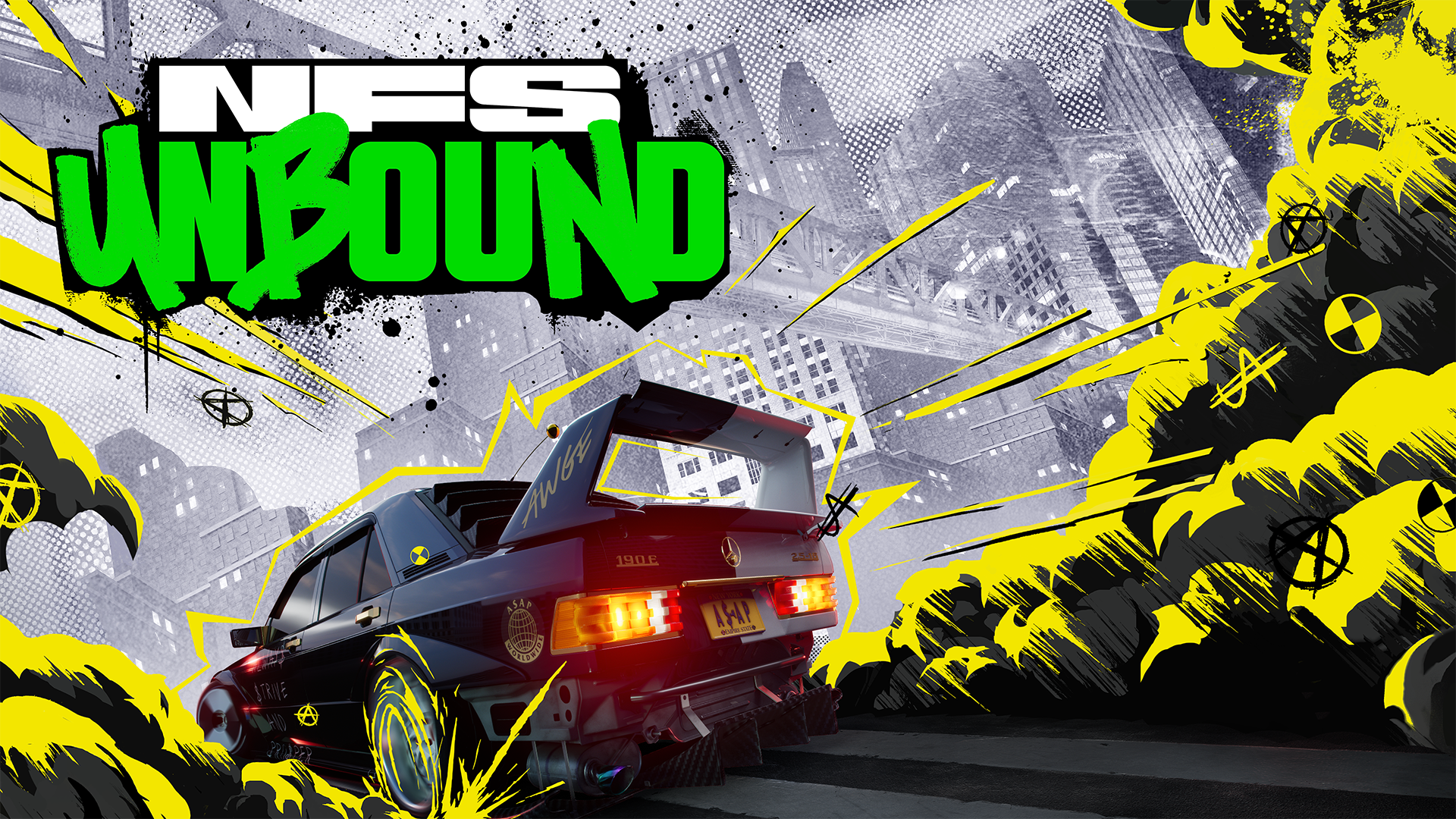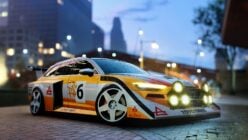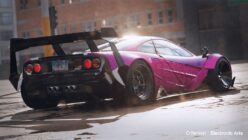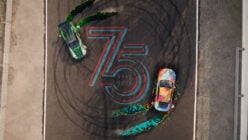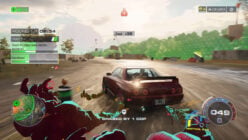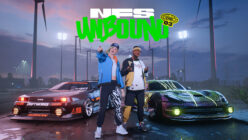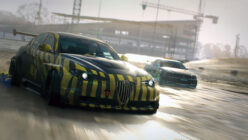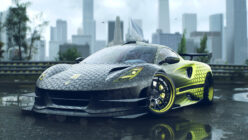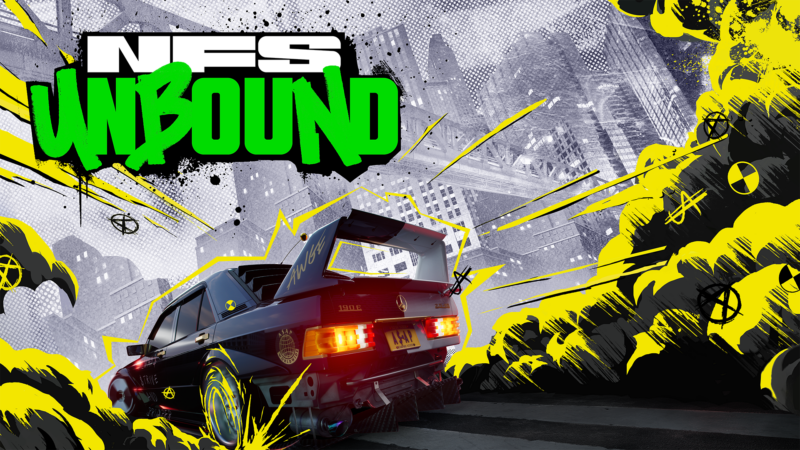
As one of the longest-lived gaming series of all, never mind just the racing genre, a new NFS game is kind of a big deal. Or at least we thought it was; the promotional lead-up to Need for Speed Unbound, from the moment it was announced, was just eight weeks long, and EA sent review codes out the same day as pre-order early access went live.
Nonetheless, Unbound is the 23rd main title in the 28-year old series which has racked up well over 100 million sales across its lifetime and will be bought in the millions, almost regardless of what anyone says about it. That’s because it sticks to the tried-and-tested formula of fast cars, visual and performance mods, and chases with the cops.
It wasn’t quite enough to earn its predecessor, Heat, too many new fans — while we rather enjoyed it, a solid three-stars was just about its level — but with Criterion Games (helped by Codemasters) now back in charge, there’s been some optimism in the wider community. Has it been met? We’re finding out.
We’ve been playing the PlayStation 5 version of NFS Unbound courtesy of a “Palace Edition” review code sent through by EA.
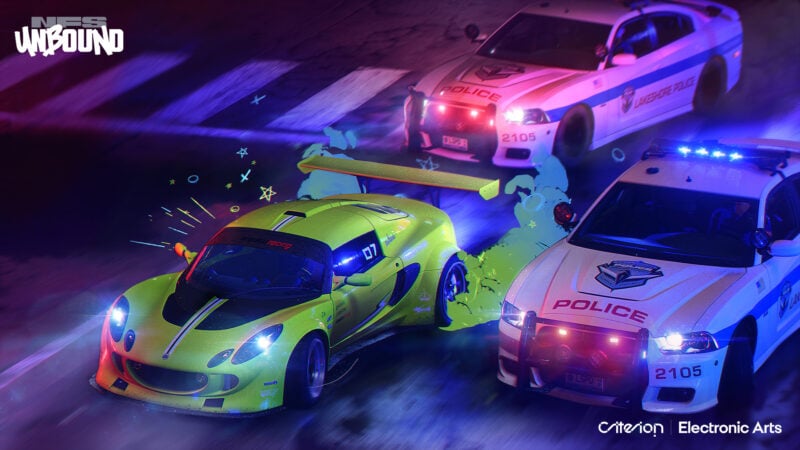
Content and Value For Money
As with Heat, Unbound’s car list is solid and covers all the bases without being too expansive or unfocused. Compared to something like Forza Horizon 5 it’s pretty compact at just 140 cars, but it’s stuffed full of the super- and hyper-cars NFS fans love as well as some hot numbers from dozens of manufacturers ripe for tuning.
However if you’re familiar with Heat, there’s going to be some deja vu here as the car list is almost identical. Bar a couple of odd absences (where did Audi go?) and a new ride here or there (Lotus Emira being a high point), it’s the same set of cars from the 2019 game and in many respects that’s deeply unimpressive. We’ve had no word on post-launch DLC yet either.
Each car has a range of upgrades available for it, which will also seem a little familiar too. There’s five tiers – Basic, Sport, Pro, Super, and Elite – and parts for on- and off-road. We haven’t encountered “Ultimate” parts yet, but otherwise that’s the same as Heat too.
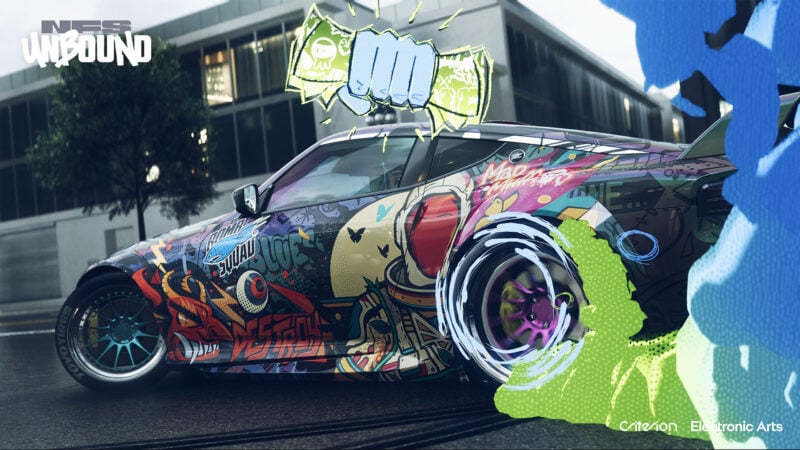
You’ll need to spend some of your (very) hard-earned “Bank” to upgrade the garage to make higher grade parts available, and tuning your car may move it up into higher performance brackets from B to S+ — using the very same 100-399 point system as Heat. There’s also visual upgrades including body kits and vanity items like underglow which don’t affect performance, but looking good is half the NFS ethos.
There’s a large map based around a city in the north-east quadrant, this time called Lakeshore, packing the usual tropes of a quarry, a container port, a feature up in the mountains (this time it’s a ski-jump) accessed by switchbacks, and a confusing freeway set up. Despite Lakeshore’s mayor being very anti-racing, there’s a race track too…
Earning “Bank” (money) is a matter of hitting up the various races. These are based at “Meetup” points and there’s races for different tiers of cars. It’ll be very slow going at first, as the B-tier prizes are relatively small and the higher-value events have a buy-in.
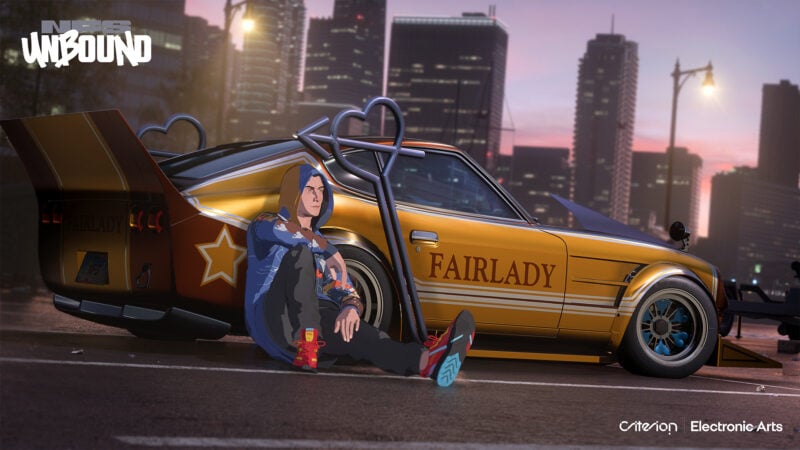
You will be able to make some cash on the side by betting with your rivals; beat them in the race to take their money. All races, day or night, bring “Heat” down on you from the cops (resolving an issue we had with Heat), and this only resets at the end of the night when you get to a safehouse. There’s also “Takeovers” which essentially consist of a stunt course you’ll need to drive better than the preset scores of the AI drivers to take prize money.
Again, there’s plenty to do on the map other than just race. You’ll need to find the gas stations which magically repair your car as you drive through them, as well as finding collectible items like billboards, street art, and gross inflatable bears which look like a run of NFTs, set records at jumps and speed zones… Yep, that’s Heat but with bears instead of neon flamingoes.
Naturally there’s a story with a plot so thin that it defies metaphor, but suffice to say someone will do you wrong and you need to take revenge by beating them in a street race two years later after spending four weeks building some new cars. As well as racking up money for mods, you’ll need to earn enough to race in the weekly qualifiers. There’s three of these before the final “Grand” where you get your payback.
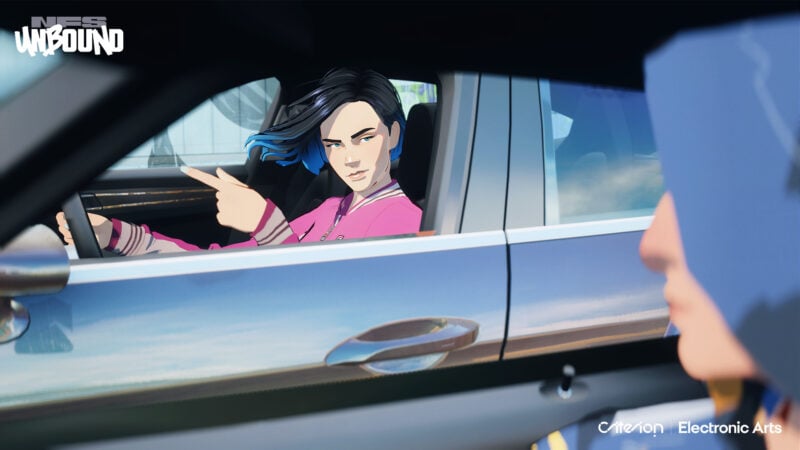
Online Features
Unlike Heat, there’s an entirely separate online mode which takes place on the full, unlocked map with all the safehouses and meetup locations available.
That’s pretty convenient, as it means you can explore more of the map without having to progress in single-player — and in fact you can pick up the various collectibles/discoverables in multiplayer and they carry across to the solo mode too (though the “Bank” rewards don’t).
Multiplayer is a pretty simple affair, largely consisting of drop-in hoppers at the various meetup points – takeovers aren’t available at the moment – allowing you to just jump in to either a multi-tier or single-tier race event with up to eight players in each race.
It’s largely the same experience as the solo game except the races are three-race events (thus far) and sidebets aren’t available, but the more players in an event the higher the rewards. You can also set up a party of up to four players.
You have an entirely separate garage in multiplayer too, which means starting off from scratch again. That means that if you have a favorite single-player car, you’ll need to recreate it in your online garage as it doesn’t carry over. In fact even your character doesn’t carry from solo to multiplayer.
At the moment there appears to be no day/night cycle or police presence in the multiplayer mode. Sadly the “crew” feature from Heat — allowing for players to club together (and earn rewards collectively) — is no more.

Driving Physics and Handling
You don’t come to a Need for Speed game expecting entirely authentic driving characteristics, and to judge it on exactly the same scale as something like Assetto Corsa Competizione would be a tad unfair. The purpose is to go fast and enjoy it, and boy has Unbound taken a step back from Heat in that regard.
Firstly, there’s precious little sense of speed. Even though the game now runs at a smooth 60fps, 150mph past traffic barely feels quick. While stealthily following a truck behind a cop car so the cops didn’t spot us, crawling through the center of Lakeshore, the HUD had us at 58mph at what felt like walking pace — and that was with default motion blur turned on.
In fact the only time you feel like you’re driving fast is when there’s a corner. Then the car will either understeer or — if you contemplate braking in anything other than a straight line — violently snap to oversteer. This applies regardless of whether the car is front or mid-engined and front, rear, or four-wheel drive, and with any preset for the handling.
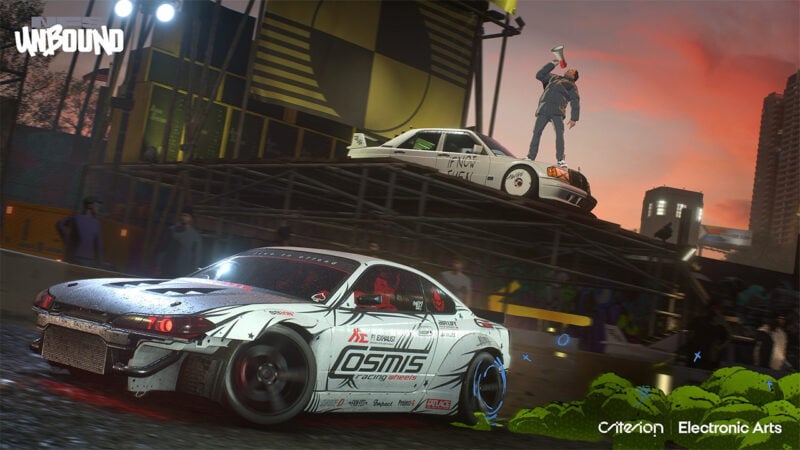
Considering the value of the drifting mechanism — 40% of the tuning menu relates to it, and it fills up both of your nitrous gauges — drifting in the game is not pleasant at all. Initiating one is easy enough (and there’s options on how to do this) but holding and exiting a drift are a coin toss compared to older games.
We’ve found that just about the best way to get the car to consistently drift is to wind the Grip/Drift slider to maximum drift (how much this is depends on what drift parts you’ve fitted) and do the same with steering sensitivity. That doesn’t make the car much fun to drive at all, but it’ll get you through the drift events (and keep your multiplier high in takeovers).
Again, the various weather conditions are more for show; no amount of surface rain makes your car slide any more. The difference between on/off-road physics is more convincing, to a point. Collisions with any environment item that isn’t immovable are also inconsequential, so you can just drive through many rocks without losing any momentum at all.
It’s also worth noting that none of the NPC cars are subject to the same physics as you. Police cars can accelerate to keep alongside you while you’re deploying a three-bar nitrous shot and can stop and turn on a dime, and AI racers appear to maintain their gaps no matter what (when they aren’t the lead AI and disappearing over the horizon).
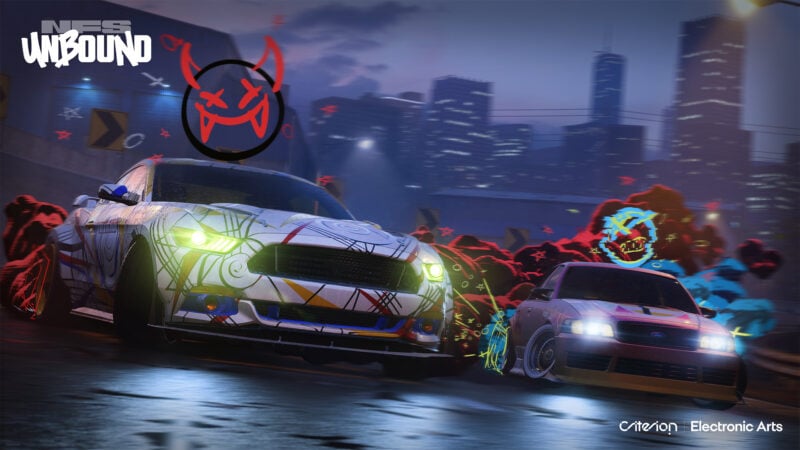
Graphics
One area where Unbound is a step up from Heat is visually, although this should be pretty obvious given its next-gen-only nature. 4K at 60fps is what you’d expect and, to our eyes, that’s what you get pretty much all the time on the PlayStation 5 version.
The vehicle models themselves are excellent — as good as we’ve seen in an NFS game, particularly when it comes to some of the undressed mods — as are the environments. There’s some pop-in at times, particularly in the more densely packed city environment, but it largely takes place outside the direct field of view or at sufficient distance to not be obvious.
It does all highlight how drab Lakeshore is though. Heat’s Palm City was vibrant and colorful, but Unbound’s Lakeshore is gray, save for the odd gas station. At night it’s like driving through Eeyore’s mind, with only the glow of the checkpoint gates to save you.
However NFS isn’t going for full-on realism in Unbound, and of course we need to address the various different graphical styles at play.

The first of those is the cel-shaded humans. Every character in the game, from the drivers to the awkward moon-walking pedestrians (which are very jarring to watch as you barrel towards them), is a highly simplified, cel-shaded being.
It’s unique, but we’re not sold on this look at all, especially during the pre-race grid animations where the window winds down to reveal a highly detailed interior (which you’ll never see in driving; chase or bumper cams only) with a cartoon driver. However it does allow for the various player avatars to be essentially genderless (fun fact: they also have no nipples; don’t ask) and therefore almost any combination of body, clothing and hair styles allows almost any player to create a character with whom they can identify.
Surprisingly more effective is the graffiti “tags” that spring from your car when doing various stunts. It’s probably one of the more controversial additions to the game, but it actually works really rather well. The highly stylized plumes of smoke, pop-up icons, and wings that sprout mid-flight sound truly bizarre, but they’re not intrusive, provide a great visual indicator of action (we’re not keen on the whole-car flash with burst nitrous), and just seem to suit the game. Given Lakeshore’s palette, they’re a much-needed splash of color too.

Sound Design
In terms of general sound design, Unbound has largely the same suite of pros and cons as its predecessor.
That’s to say that the cars themselves generally sound pretty authentic in terms of engine configuration and induction, and you can beef it all up a bit using the exhaust tuning slider, but the environmental sounds are on the sterile side. There’s little sign that Lakeshore is a living city, bar the odd honk or pedestrian complaining.
For some reason we can’t put our finger on, even the car sounds are not quite as satisfying as Heat though. From the supercharger whine being less effective even at maximum to a bizarre gearshift sound on a stock-but-Pro level gearbox more akin to stirring gravel with a chainsaw, the car sounds don’t really grab as much as they did in Heat.
The game seems less spatially aware of audio too — we’ve had some odd experiences where the AI 200 yards ahead is louder than the AI 20 yards behind.
It leans heavily into dialogue, with cop radio coming through loud and clear while they’re trying to chase/destroy you as well as your rivals’ lifted-from-Fast-and-Furious soundbites. This is something that happens when the game feels like it — we’re not totally sure what the trigger events are save for collisions — and it’s often which rival is talking.
The soundtrack is all a little one-trick, and again it’s not a trick that we find particularly appealing — speaking as a British Gen Xer — but it is expansive and well curated to the game’s theme and style. With one exception.
Inclusivity appears to be a major focus of the game, with the seemingly genderless avatars, a variety of identity flags available as decals, and a trans character among the rival drivers. It almost defies logic then that there’s a track in the listing with a disability slur in its title (and lyrics) — one which has had two high-profile cases involving recording artists Lizzo and Beyonce this year.
While considered less problematic in the USA, it’s an extremely well-known slur in Criterion and Codemasters’ native UK and they should know better; censoring the title slightly in-game just isn’t enough (especially as it’s not censored at all on the official game Spotify playlist).

The Verdict
For all its bold art direction, Unbound is a largely safe game. It takes a lot of inspiration from Heat and does pretty much all of that again — right down to the car list, tuning menus, and very familiar-feeling map. The handful of differences, such as the ditching of “Rep”, and the persistence of “Heat”, don’t generate a major shift in how it feels compared to its predecessor.
That means that, even though it does a lot of things rather well and the 4K60 visuals on console are a breath of fresh air, it’s a little disappointing. It doesn’t feel as fun to drive, or to look at — Palm City was far more vibrant — while also coming across as pretty much the same game again, or even a map expansion.
As a standalone title, or if it’s your first NFS, it’s not bad by any means, but it’s not the kick in the tailpipe that the series needs right now.
Need for Speed Unbound
Learn more about how our rating system works.
